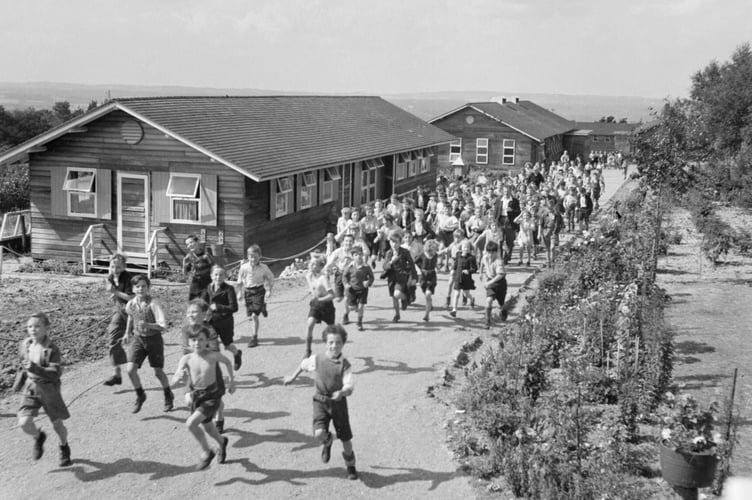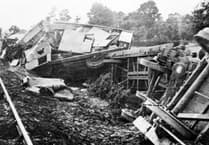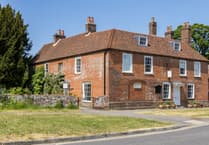In late July, we asked our readers for any information regarding the tragic deaths of two 11-year-olds, listed as ‘civilian war dead’ in Farnham urban district.
While the case of Peter Arthur Stubbles, who died on August 2, 1944, remains a mystery, an anonymous reader has shed light on the poignant story of Peter Alan Darwell Sidey.
A wartime escape to safety
Peter Sidey was one of many children evacuated from the perilous bombings of London to the relative safety of Marchant’s Hill Camp School in Hindhead.
This area, known today as a PGL holiday camp, was a haven for children escaping the Blitz. The Imperial War Museum archives hold several striking photographs of these inner-city children enjoying their new surroundings on the Surrey/Hampshire border.
However, the innocence of these children’s adventures turned to tragedy on December 4, 1943. Brian Barnard, one of the survivors, recalls how the children would often search for bullets and shrapnel on the school grounds, collecting and trading these wartime remnants.
On that fateful day, they stumbled upon a live mortar shell from a nearby Canadian Army barracks, an encounter that would have devastating consequences.
The day of the explosion
Barnard remembers vividly: “We picked it up and took it back into the camp. The rumour got around at the school that we had this bomb.” The boys hid the shell in their dormitory, but a few nights later, disaster struck. “Suddenly there was the biggest bang and we heard kids running around,” said Barnard, who lived in Byron Avenue, Manor Park, and now resides in Ilford.

The explosion caused immense damage, blowing a hole in the floor, shattering windows, and puncturing the roof. The aftermath was catastrophic: Alistair McLellan, 12, was killed instantly, while James Watt and Peter Sidey later succumbed to their injuries. Barnard recounts the harrowing sight of his friend: “The last time I saw Jimmy, he was in a wheelbarrow with his legs blown off.”
A community in mourning
The tragedy prompted an outpouring of grief and sympathy from the community. The Secretary for Education, Mr AA Garrad, the mayor, the headteacher, and East Ham Borough Council all expressed their condolences. A public inquest was held, and the parents of the victims were notified. Barnard returned home on VE Day, May 8, 1945, and visited the graves of his friends for many years.
Records from the Commonwealth War Graves Commission reveal that Peter Sidey was buried in Farnham and Alistair McLellan in Haslemere. However, no local records of James Watt’s burial could be found.
Memories of Marchant’s Hill
The BBC's WW2 People’s War project features another account from Michael Talbot, who was also evacuated to Marchant’s Hill. Talbot described the camp as a series of wooden dormitories surrounded by open grounds, located near the famous Devil’s Punchbowl.
He recounted how the children, including himself, would explore the surrounding countryside, often interacting with the Canadian troops stationed nearby. These soldiers would invite the children to their camps, providing meals, entertainment, and a temporary escape from the war’s harsh realities.
However, Talbot also highlighted the dangers that came with their explorations. “Some of us used to go out (unofficially) to their firing ranges and come back with live ammunition,” he wrote. The excitement of finding such items often overshadowed the potential dangers, leading to the tragic incident that claimed the lives of Peter Sidey and his friends.
A legacy of education
After the war, Marchant’s Hill Camp School transitioned into a national outdoor camp for young people, utilised by the Duke of Edinburgh Award Scheme. Since the late 1950s, it has continuously served as a hub for outdoor education. Initially purchased by the London County Council, the site later came under the administration of the Inner London Education Authority in 1964, and is today operated by PGL - offering a countryside retreat for inner-city school children and maintaining its legacy as a school camp to this day.




